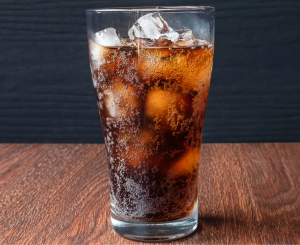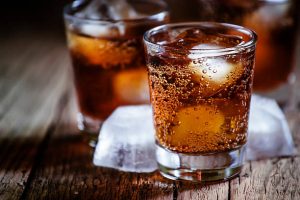1. Introduction
Soft drinks are among the most popular beverages worldwide, enjoyed for their refreshing taste and effervescent sensation. But have you ever wondered what gives these drinks their signature fizz? The answer lies in a gas that plays a crucial role in carbonation.
In this article, we will explore which gas is filled in soft drinks, how it contributes to the taste and preservation of the beverage, and the technology behind carbonated drinks machines that make this possible.

2. The Main Gas Used in Soft Drinks
The primary gas used in soft drinks is carbon dioxide (CO₂). This colorless, odorless gas is responsible for the bubbles and fizz that make carbonated beverages enjoyable.
When CO₂ is dissolved in liquid under pressure, it forms carbonic acid (H₂CO₃), which slightly lowers the pH level of the drink, giving it a tangy and refreshing taste. Once the bottle or can is opened, the pressure is released, allowing CO₂ to escape in the form of bubbles.
Soft drinks, including soda, sparkling water, and energy drinks, all rely on carbon dioxide in soda to achieve their characteristic fizziness.
3. The Role of Carbon Dioxide in Soda
CO₂ is not just about making a drink fizzy—it serves multiple purposes in soft drinks:
✅ Enhancing Taste: The mild acidity from dissolved CO₂ enhances the overall flavor, making the drink more refreshing.
✅ Preservation: CO₂ helps extend the shelf life of soft drinks by inhibiting bacterial growth.
✅ Fizziness Effect: When you open a soda can, the gas rapidly escapes, creating a pleasant bubbling effect that contributes to the drinking experience.
Without carbon dioxide, sodas would be flat and lack their signature refreshing sensation.
4. The Formula of Soda Water
The formula of soda water is based on a simple reaction:
CO2+H2O⇌H2CO3CO₂ + H₂O ⇌ H₂CO₃
This equation represents the process of carbonic acid formation, which gives carbonated beverages their tangy taste. However, carbonic acid is weak and quickly decomposes back into water and carbon dioxide when the pressure is released, causing the drink to go flat over time.
Apart from CO₂, many soft drinks also contain sweeteners, flavors, and preservatives, but the soda water formula remains the foundation of most carbonated beverages.

5. How Carbonated Drinks Are Made?
The production of soft drinks involves specialized equipment designed to infuse beverages with CO₂ efficiently. This process is carried out using a carbonated drinks machine, which ensures the right level of carbonation.
Here’s how the process works:
-
Water Purification: Clean, filtered water is prepared to ensure quality.
-
Carbonation Process: CO₂ is injected into the liquid under high pressure to dissolve the gas efficiently.
-
Flavor and Sweetener Addition: Depending on the soft drink type, ingredients like sugar, artificial sweeteners, or natural flavors are mixed in.
-
Filling and Packaging: The carbonated liquid is filled into bottles or cans using automated machinery to maintain consistent pressure.
-
Sealing to Preserve Fizz: The packaging is sealed tightly to retain the CO₂ until the consumer opens the drink.
Temperature and pressure control are crucial during this process. The colder the liquid, the more CO₂ it can hold, which is why sodas are best stored at low temperatures.
6. Conclusion
Carbon dioxide (CO₂) is the key gas in soft drinks, creating fizz, enhancing taste, and preserving freshness. Carbonated drinks machines ensure the perfect carbonation in every bottle.
Next time you enjoy a soda, appreciate the science behind those bubbles! Could future innovations bring a CO₂ alternative? Time will tell.


